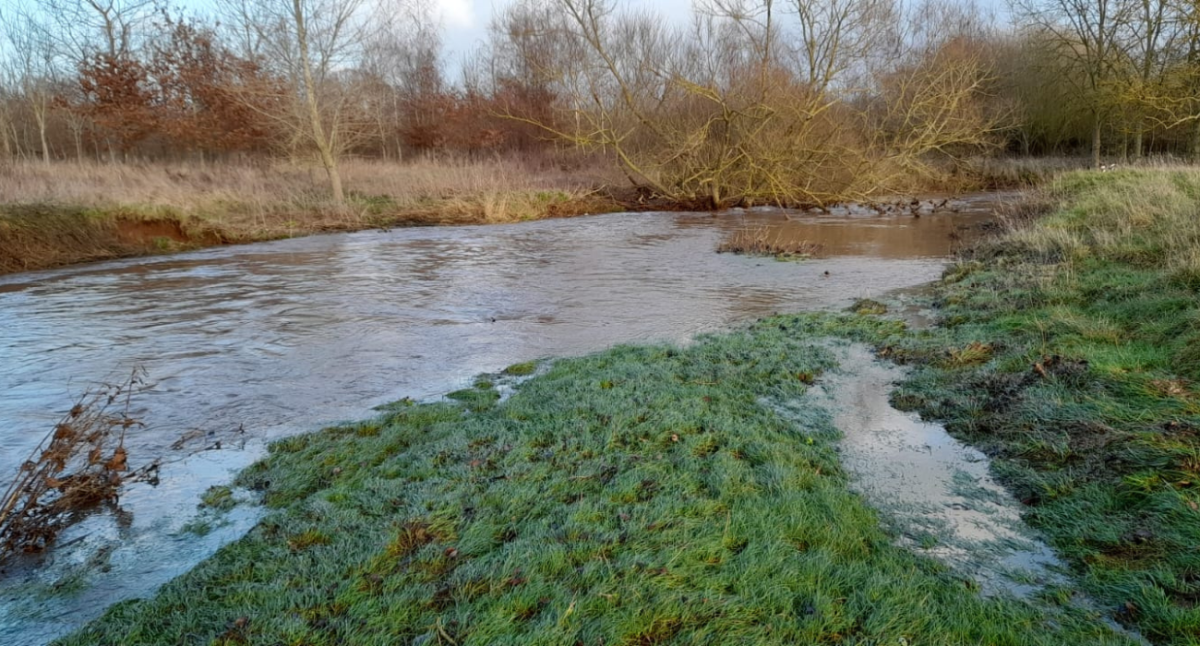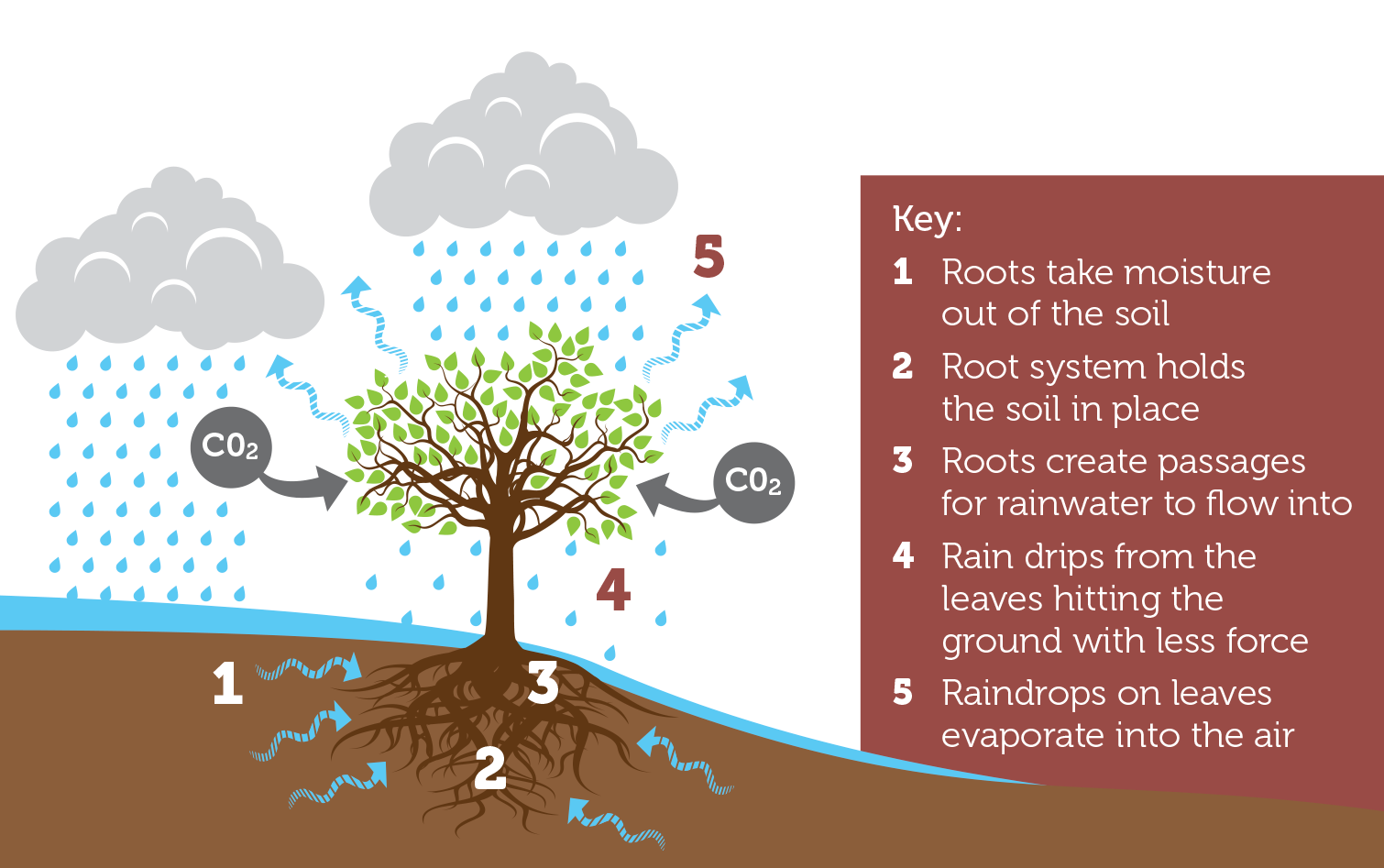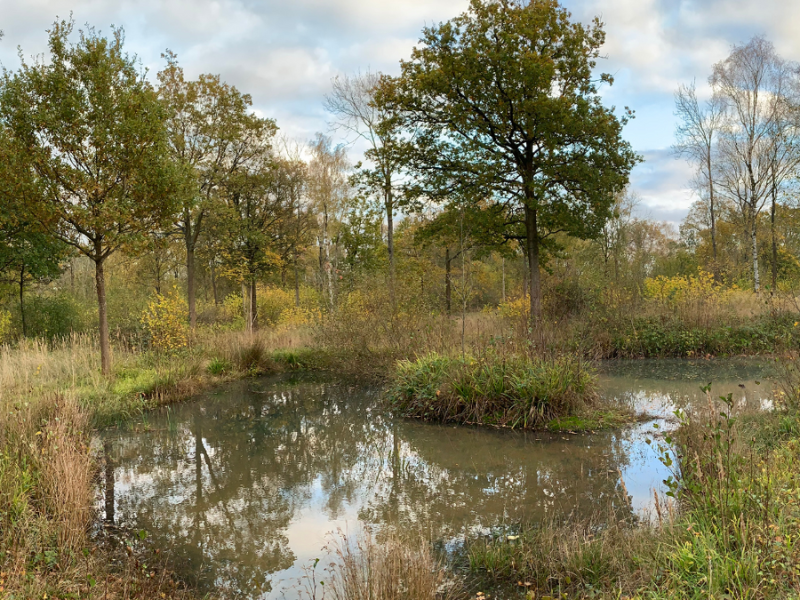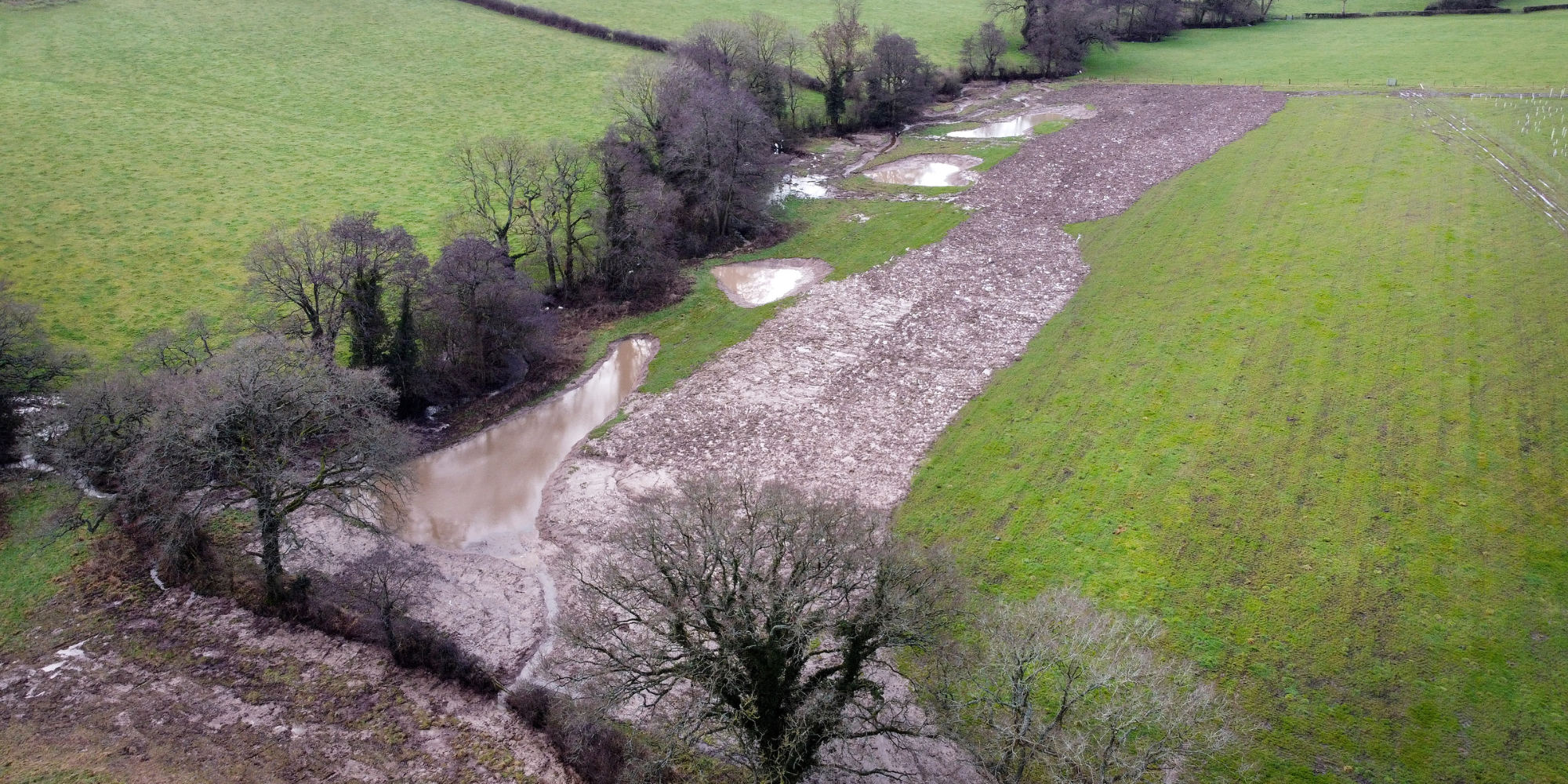
The Forest in the fight against flooding
Heart of England Forest Trustee Dave Throup brings a wealth of experience of flooding and climate change to his voluntary role at the charity, having spent twenty years working as the area manager for the Environment Agency in Hereford and Worcester with a focus on flooding and environmental protection, and in recreation and conservation planning for Seven Trent Water for ten years before that.
Now retired, Dave has become a trustee for the charity because of his admiration of our work in habitat creation and the potential it represents in mitigating and adapting to the inevitable consequences of a rapidly changing climate.
Climate change and extreme weather
Regardless of where you live in the country (or the world), we are all feeling the effects of more frequent and extreme weather events due to man-made climate change. And things are going to get considerably more extreme in the future.
Rising sea levels, increased storm surges, more frequent and severe heatwaves and droughts, heavier rain events, and increased runoff, are all now inevitable.
On the flipside, water shortages are also likely to be an increasing issue in the Midlands over the coming decades due to climate change. Rivers in the region are predicted to be up to 70% lower in the summer in the next few decades than they are now. This will have a big impact on things like water supply and agriculture, which will affect all of us.
We need to think beyond man-made flood defences and look at alternative ways to manage flooding, and given their flood alleviation properties, trees could be our first line of defence.
How trees help in the fight against flooding

How do trees help? They take moisture out of the soil, allowing it to soak up more rainfall decreasing the amount of water contributing to flash flooding events.
Root systems also hold soil in place, stopping valuable and nutrient-rich topsoil being washed away into rivers and streams, which can contribute to flooding and pollution in times of heavy rainfall.
Raindrops that land on leaves either evaporate straight into the air, so less water reaches the ground which slows the flow of water, or drip onto the ground with less force, so cause less erosion.
Collectively this is known as slowing the flow. We can’t stop heavier rainfall getting into rivers, but by delaying it a bit over wide areas we can stop it all arriving at the same time and causing damaging flood peaks. Research is already showing it to be a highly effective method of combatting flooding in the UK.
The environment, flooding, and the impact in the Midlands
Flooding is a topic particularly relevant to people living in the Midlands because it is a region very prone to flooding. Many of those living in the area will have first-hand experience of floods, whether in their homes, businesses, or via disruption to travel. The extensive river network comprises some of the most iconic and valued locations, but also represents a considerable threat in an increasingly turbulent climate.
Two examples that show the increasing frequency of flooding incidents in this part of the country spring to mind. Worcestershire County Cricket Club moved to its current home at New Road, Worcester in 1865. In the 135 years to 2000 there were five very big floods of over 5m measured at the Diglis river gauge. Since 2000 there have already been eight.
In Hereford, there have been 16 floods of 5m or above recorded, the oldest dating back to 1795. Of those 16 floods, eight have been since 2000, and six have been in the last four years. River flooding is getting more frequent and more extreme.

Severe degradation of the countryside over recent decades has resulted in little woodland in the region that is publicly accessible. The Heart of England Forest is helping to reverse centuries of woodland decline by creating and conserving a huge, native broadleaf forest that stretches up the Warwickshire / Worcestershire border. Currently covering 7,000 acres, but with the vision to reach 30,000 acres, the Forest has the potential to be a major flood fighter in the region.
We need more people to understand the connection between climate change, increased/extreme flooding in the area, and how woodlands, and therefore the work of the Heart of England Forest can help to combat this.
Using the power of nature
For many years the main solution to flooding has been the building of hard flood defences to keep water out of homes and businesses. This has been very successful in some locations, and locally many towns and villages have been spared the misery of flooding because of investment in defences. But increased rainfall and extreme flood events due to climate change has already led to defences being overwhelmed.
From Brechin in Scotland, Keswick in the Lake District, and locally at Bewdley, recently built flood defences have been unable to cope with water levels experienced. And all predictions are for flood levels to increase significant over coming years.
We can’t keep building higher walls and engineer our way out of it. We need to use the power of nature and on a landscape scale.
10mm of rainfall drops 100,000 litres of water on every hectare it falls on. Even small river catchments cover thousands of hectares.
And because water is very heavy (a cubic metre weighs a tonne) it will make its way to rivers and ultimately the sea, very quickly.
By slowing that journey using natural processes we can make a big difference.
How the Forest is helping
While there are many actions being taken by different organisations, charities, individuals, and various stakeholders to combat climate change and its impacts, they are not coordinated enough and not going far enough to really make a difference.
This is why we need to focus on the practical steps that the Heart of England Forest is taking to combat climate change and mitigate against its impacts on a landscape scale, balancing the longer term with the immediate.
The Forest is being designed to consider the positive effects of trees on the local area and the natural flood management which can benefit local communities. The green infrastructure provided by the Forest can play a crucial role in reducing the volume of flooding and delaying the arrival of flood peaks to increase preparation time.

Another example is the new wetland scrape complex at Oak Wood, adjacent to a tributary of the River Alne, where we have broken field drains, allowing water to collect in a series of new scrapes and braided channels, slowing the flow of water into the river catchment.
Slowing the flow can also be achieved by planting trees and installing leaky dams to increase resistance and prevent flash flooding. The series of leaky dams in field drainage ditches at Arrow Mill are slowing the flow of water into the River Arrow.
Tree planting and grassland cover in the Forest are also increasing the amount of water that drains into the ground, reducing water run-off and soil sedimentation of the rivers.
The Heart of England Forest already works with the Environment Agency and local authorities on natural flood management measures.
In the Spernal area of the Forest, which consists of over 3,000 acres of Forest mosaic, the charity has worked with the Environment Agency to identify areas where flood defences are struggling and are using trees to help. As the charity owns almost all the upper catchment, any work we do in managing our own land and creating green infrastructure will have a direct effect on the neighbouring towns of Alcester and Redditch, both of which remain as high priorities for the Environment Agency flood prevention teams.
The Heart of England Forest is also part of the Warwickshire Avon catchment partnership, a group which aims to take a collective approach to how we can better manage the rivers within this catchment. The partnership’s vision is for a sustainable catchment of healthy rivers with functioning floodplains, resilient wildlife habitats and appropriate access, with people actively caring for and valuing their natural environment and heritage.

Final thoughts
I believe that the Heart of England Forest should be seen as an exemplar of how to do landscape restoration and natural flood management. There is no doubt that the Heart of England Forest has huge potential for using its natural capital to great benefit in tackling extreme weather events linked to climate change.
Crucially, working towards its ultimate aim of a 30,000 acre woodland, the benefits of the Forest are scalable for natural flood management and all the other advantages it brings for the environment, wildlife, and people.
The more Forest we can create, the more we can slow the flow. I hope many more people – both locally and nationally – get onboard and support the charity’s important work.



